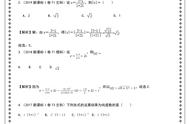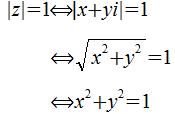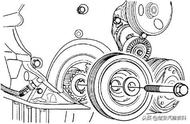口诀:
"s" or "es" 结尾,一般名词没疑问。"y"变"i",再加"es",辅音字母前。
不规则复数,一定记住,像鹅鼠和牙。同形复数,易混淆,像羊鱼。
英语中,大部分名词变复数比较简单,通常只需要在单词后面添加 "s" 或 "es"。然而,有一些名词的复数形式是特殊的,不按照这个规则变化。
可以通过以下一些提示或"口诀"来帮助记忆:- 大部分的英语名词复数形式只需在末尾加上“s”或“es”。例如:cat -> cats, dog -> dogs, box -> boxes.
- 以“ch”,“sh”,“x”,“s”,“z”结尾的名词,复数通常加“es”。例如:church -> churches, dish -> dishes, fox -> foxes.
- 以辅音字母 y结尾的名词,通常把"y"改为"i",再加上“es”。例如:city -> cities, lady -> ladies。
- 一些常见的不规则复数形式需要通过记忆。例如:child -> children, mouse -> mice, tooth -> teeth。
- 一些英语名词的复数形式与其单数形式相同。例如:sheep -> sheep, species -> species.
- 一些从拉丁语和希腊语借用的名词有特殊的复数形式,例如:cactus -> cacti, crisis -> crises.

以下是一些规则详细说明:
不规则复数形式:有些名词的复数形式与单数形式完全不同。例如:
man -> men (男人 -> 男人们)
woman -> women (女人 -> 女人们)
child -> children (孩子 -> 孩子们)
tooth -> teeth (牙齿 -> 牙齿们)
foot -> feet (脚 -> 脚们)
mouse -> mice (老鼠 -> 老鼠们)
goose -> geese (鹅 -> 鹅们)
louse -> lice (虱子 -> 虱子们)
ox -> oxen (公牛 -> 公牛们)
calf -> calves (小牛 -> 小牛们)
leaf -> leaves (叶子 -> 叶子们)
half -> halves (一半 -> 两半)
knife -> knives (刀 -> 刀子们)
life -> lives (生命 -> 生命们)
thief -> thieves (小偷 -> 小偷们)
wolf -> wolves (狼 -> 狼群)
wife -> wives (妻子 -> 妻子们)
请注意,在中文中,并没有像英语那样明显的名词复数变化形式,所以中文解释中的“们”主要是为了表示复数的含义。
以 "f" 或 "fe" 结尾的名词:有些以 "f" 或 "fe" 结尾的名词在复数形式中将 "f" 或 "fe" 变为 "ves"。例如:leaf -> leaves
knife -> knives
life -> lives
但是这个规则并非总是适用,例如 "roofs" 和 "chiefs"。
希腊或拉丁词源的名词:有些英语名词源于希腊语或拉丁语,因此它们的复数形式遵循原来的语言的规则,而不是英语的规则。例如:cactus -> cacti
nucleus -> nuclei
crisis -> crises
appendix -> appendices
index -> indices 或 indexes
不变复数:有些名词在变为复数时形式不变。例如:sheep -> sheep
fish -> fish
species -> species
deer -> deer
复合词:复合词的复数形式通常在主要部分加上 "s"。例如:mother-in-law -> mothers-in-law
passer-by -> passers-by
注意:这只是一些基本的规则,并非所有情况都适用。英语中有许多例外情况,所以最好的办法还是通过阅读和使用英语来习得正确的名词复数形式。
英语名词复数后面的s发音规则在英语中,名词复数后面的“s”或“es”的发音规则可以根据前一个字母音的性质来确定。以下是一些基本规则:
如果名词以/s/, /z/, /ʃ/, /ʒ/, /tʃ/, /dʒ/等无声或有声的摩擦音或者爆破音(也就是“s”, "z", "sh", "zh", "ch", "j"的发音)结尾,那么其复数形式的结尾发音为/ɪz/。例如,"buses" /ˈbʌsɪz/,"watches" /ˈwɒtʃɪz/。
如果名词以无声的其他辅音结尾(除了/s/, /ʃ/, /tʃ/的发音外),那么其复数形式的结尾发音为/s/。例如,"cats" /kæts/。
如果名词以元音或者有声的其他辅音结尾(除了/z/, /ʒ/, /dʒ/的发音外),那么其复数形式的结尾发音为/z/。例如,"dogs" /dɒɡz/,"boys" /bɔɪz/。
这些规则也适用于动词第三人称单数形式的结尾“s”或“es”的发音。
以下是一些关于这些名词的练习题:练习题一:
将以下的单词转换成复数形式:man, tooth, ox, calf, knife。
选出以下单词的正确复数形式:woman (a) womans (b) women.
将以下的单词转换成复数形式:mouse, goose, louse.
选出以下单词的正确复数形式:leaf (a) leafs (b) leaves.
将以下的单词转换成复数形式:foot, life, wolf.
练习题二:
What is the plural form of "fox"? (狐狸的复数形式是什么?)
a) foxes
b) foxs
c) fex
What is the correct plural form of "child"? (孩子的正确复数形式是什么?)
a) childs
b) children
c) childer
The plural of "mouse" is: ("mouse"的复数形式是:)
a) mouses
b) mice
c) meese
What is the correct plural form of "tooth"? ("tooth"的正确复数形式是什么?)
a) gooses
b) geeses
c) geese
The plural of "sheep" is: ("sheep"的复数形式是:)
a) cactuss
b) cactuses
c) cacti
The plural of "woman" is:
a) womans
b) women
c) wemen
What is the correct plural form of "tooth"?
a) tooths
b) teeth
c) toother
The plural of "sheep" is:
a) sheeps
b) sheep
c) sheeple
The correct plural of "crisis" is:
a) crisises
b) crisis
c) crises
What is the correct plural form of "radius"?
a) radiuses
b) radii
c) radie
,














